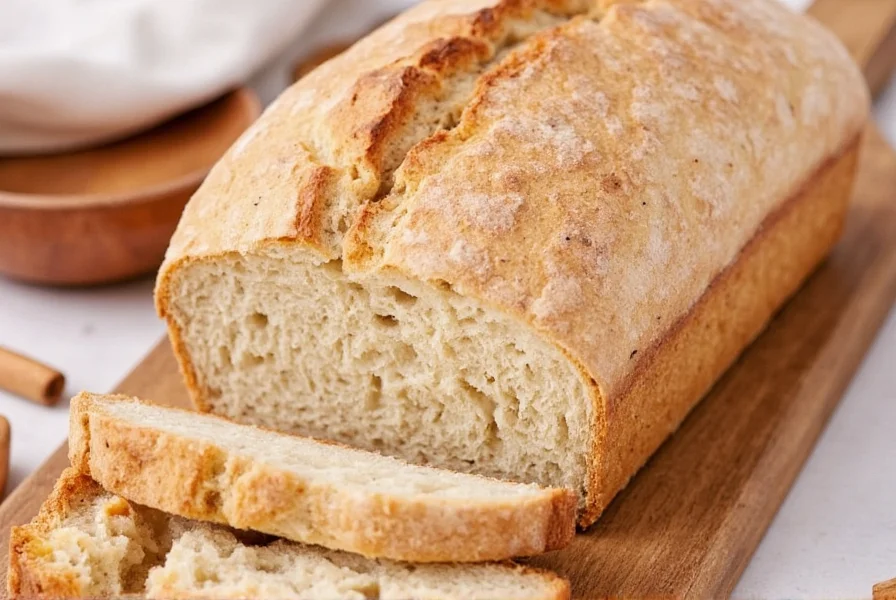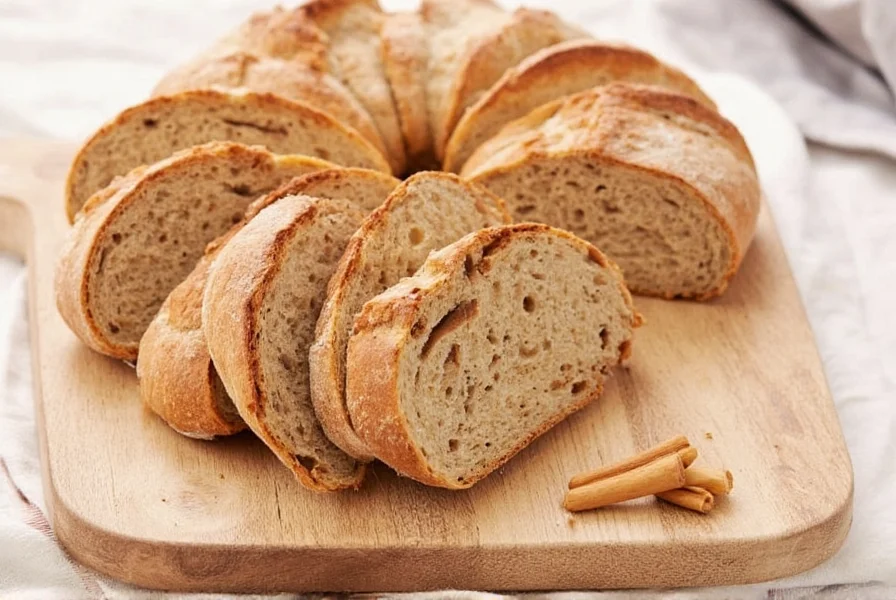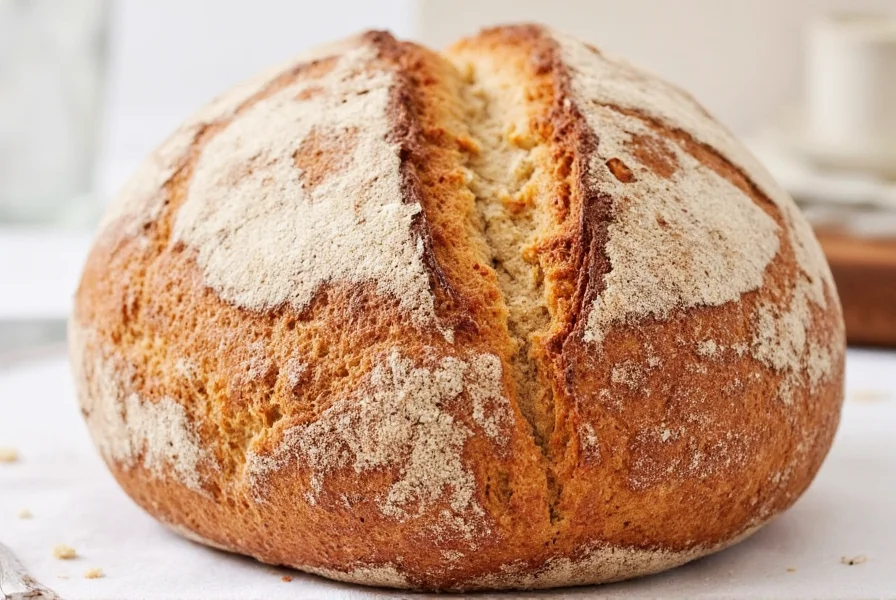Creating exceptional cinnamon sourdough bread requires understanding how this beloved spice interacts with wild yeast cultures. While traditional sourdough relies solely on natural fermentation, adding cinnamon introduces variables that affect both flavor development and dough structure. The key challenge lies in cinnamon's antimicrobial properties, which can slow fermentation if incorporated too early in the process.
The Science of Cinnamon in Sourdough
Cinnamon contains cinnamaldehyde, a compound with natural antimicrobial effects that can inhibit yeast activity when mixed directly into the dough during bulk fermentation. Professional bakers overcome this by using a lamination technique—rolling out the dough and sprinkling cinnamon between layers during the final shaping phase. This method ensures even distribution while minimizing contact with active yeast cultures during critical fermentation stages.
For optimal flavor integration, use freshly ground Ceylon cinnamon rather than pre-ground varieties. Ceylon cinnamon (often called "true cinnamon") offers a more complex, floral profile with less coumarin than the more common Cassia variety, resulting in a subtler, more sophisticated taste that complements rather than overwhelms sourdough's natural tang.
| Ingredient | Amount | Special Notes |
|---|---|---|
| Bread flour | 500g | High-protein (12-13%) for structure |
| Active sourdough starter | 100g | 100% hydration, at peak activity |
| Water | 350g | 75°F (24°C) filtered water |
| Sea salt | 10g | Add after autolyse |
| Ceylon cinnamon | 15g | Freshly ground, added during lamination |
| Brown sugar | 20g | Optional for enhanced caramel notes |
Step-by-Step Cinnamon Sourdough Process
Begin with a 30-minute autolyse of flour and water before adding your active starter and salt. Perform four sets of coil folds during the first two hours of bulk fermentation, spaced 30 minutes apart. The dough should show moderate strength development but remain supple.
After bulk fermentation (typically 4-5 hours at 75°F/24°C), gently shape the dough into a rectangle on a lightly floured surface. Evenly distribute the cinnamon (and optional brown sugar) across the surface, then roll the dough tightly from one long edge to create a spiral. Seam-side down, perform a final coil fold to strengthen the dough before placing it seam-side up in your proofing basket.

Troubleshooting Common Issues
Many home bakers encounter problems with cinnamon sourdough that don't occur with plain versions. Here's how to address the most frequent challenges:
- Weak rise: Cinnamon's antimicrobial properties may have slowed fermentation. Extend bulk fermentation by 1-2 hours or increase starter percentage slightly
- Uneven spice distribution: Ensure cinnamon is finely ground and evenly sprinkled before rolling. Use a pastry brush to distribute evenly
- Overly dense crumb: Cinnamon can absorb moisture. Increase hydration by 5-10g if using significant amounts
- Bitter aftertaste: You're likely using Cassia cinnamon. Switch to Ceylon for a more delicate flavor profile
Advanced Flavor Development Techniques
For truly exceptional cinnamon sourdough bread, consider these professional techniques:
Infuse your water with cinnamon sticks during the 24 hours before baking. Simmer 2-3 cinnamon sticks in your water portion for 10 minutes, then cool to room temperature before using in the dough. This subtle flavor infusion enhances complexity without inhibiting fermentation.
Another method involves creating a "cinnamon levain"—a portion of your starter fed with a small amount of cinnamon 12 hours before mixing your final dough. This allows beneficial bacteria to partially break down the antimicrobial compounds while developing unique flavor compounds.

Storage and Serving Recommendations
Cinnamon sourdough bread maintains optimal texture and flavor when stored cut-side down on a wooden board, covered with a clean kitchen towel. Avoid airtight containers which trap moisture and accelerate staling. For longer storage, freeze slices in a single layer before transferring to freezer bags.
The complex flavor profile of cinnamon sourdough develops beautifully over 24-48 hours as the spice fully integrates with the fermented dough. Serve slightly warm with softened butter to enhance the aromatic compounds, or toast to revive the crust's crispness. This artisanal bread pairs exceptionally well with strong coffee or spiced chai.
Frequently Asked Questions
Can I add cinnamon directly to the dough instead of laminating?
While possible, adding cinnamon directly to the main dough often inhibits yeast activity and creates uneven distribution. For best results with cinnamon sourdough bread recipe success, reserve cinnamon for the lamination stage after bulk fermentation when yeast activity has stabilized.
Why does my cinnamon sourdough have a bitter aftertaste?
Bitterness typically comes from using Cassia cinnamon, which contains higher levels of coumarin. Switch to Ceylon cinnamon for cinnamon sourdough troubleshooting—its more delicate flavor complements sourdough's natural tang without harsh notes.
How does cinnamon affect sourdough fermentation time?
Cinnamon's antimicrobial properties can slow fermentation by 1-2 hours in cinnamon sourdough bread baking. Monitor dough development rather than strict timing—look for 50% volume increase and well-developed bubbles rather than adhering to a fixed schedule.
Can I make cinnamon sourdough without added sugar?
Yes, traditional cinnamon sourdough bread recipes often contain no added sugar. The natural sweetness comes from fermented flour. For enhanced caramel notes in your cinnamon sourdough loaf, consider a small amount (10-20g) of brown sugar during lamination rather than in the main dough.











 浙公网安备
33010002000092号
浙公网安备
33010002000092号 浙B2-20120091-4
浙B2-20120091-4